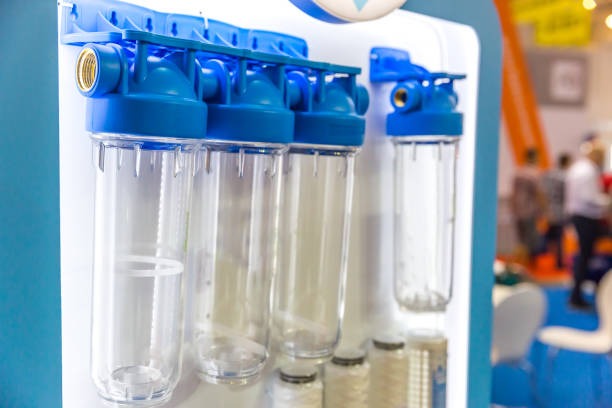Water Conditioner Installation in Carefree, AZ
Hard water is one of the most common, quietly damaging problems in Carefree homes. Mineral scale from calcium and magnesium builds up inside pipes, on water heaters, fixtures, faucets, and irrigation systems. Over time that scale reduces flow, shortens appliance life, increases energy use, and leaves spotting on glass and tile. A professionally installed water conditioner helps manage scale without the salt, making it a practical choice for many Carefree homeowners who want long-term protection with lower maintenance and reduced environmental impact.

Conditioners vs traditional softeners - what to expect
- Water softeners (ion-exchange) remove hardness ions (calcium and magnesium) and replace them with sodium or potassium. They make water feel "soft," improve soap lather, and reduce scale by changing water chemistry. They require periodic salt replenishment and a drain for regeneration.
- Water conditioners do not remove hardness ions. Instead they change how minerals behave so they are far less likely to adhere as hard scale. Conditioners are typically salt-free, do not regenerate, and do not discharge brine. They are designed primarily to reduce scale rather than to alter water taste or lower total dissolved solids.
Choosing between the two depends on goals: if you need scale control without salt, a conditioner is ideal. If you require softened water for laundry performance or sensitive skin, an ion-exchange softener may be more appropriate.
Common water conditioner technologies
- Salt-free conditioners (Template-Assisted Crystallization - TAC)
TAC converts dissolved hardness into microscopic crystals that stay suspended and pass through plumbing without forming hard deposits. It is widely used in residential installations and performs well for scale control without adding sodium. - Catalytic media
This media provides surface sites that encourage minerals to form benign particles rather than hard scale. It is often used where iron or other contaminants are low to moderate and the primary concern is scale formation. - Carbon-backed or hybrid systems
Some systems combine scale-control media with sediment or activated carbon prefilters to protect the media and remove chlorine or particulates that could reduce effectiveness.
Site assessment and product selection for Carefree homes
A proper installation starts with a detailed on-site assessment. Key factors considered include:
- Measured water hardness and presence of iron or manganese
- Water source (municipal versus private well)
- Daily water usage and peak flow rates
- Plumbing layout and available space for equipment
- Water heater type and distance to major appliances
- Local concerns: drought-driven water conservation and restrictions on brine discharge in arid regions
In Carefree, the desert climate increases evaporation and mineral deposition on outdoor features, making scale-control especially important for landscape irrigation, pool equipment, and outdoor faucets. Many homeowners prefer salt-free conditioners to avoid adding salts to landscape irrigation and septic systems.
Typical installation process
- Pre-install inspection and hardness testing to confirm system suitability.
- Placement selection near main water line entry with room for service access.
- Installation of sediment prefilter where water has particulates to protect conditioner media.
- Mounting conditioner and connecting inlet/outlet lines with a service bypass valve so water can be diverted during maintenance.
- Pressure testing and leak check, then system flushing and startup.
- Final performance check and instructions on maintenance intervals and what to monitor.
Most salt-free systems do not require a drain line or electrical supply, simplifying installation and reducing long-term maintenance demands.
Maintenance and performance expectations
- Maintenance is typically low: replace prefilters every 3-12 months depending on sediment levels, and media cartridges every 3-10 years depending on model, water quality, and household use. Annual inspections are recommended.
- Performance timeline: reduction in new scale formation is often noticeable within weeks; visible improvements on fixtures and reduced scale on heating elements typically appear over 1-3 months. Conditioners protect against new scale but do not remove heavy existing scale without mechanical cleaning.
- What they do not do: conditioners do not lower total dissolved solids or remove sodium, chlorine, bacteria, or dissolved organics. They will not improve taste or odor like a point-of-use filter or reverse osmosis system can.
Comparisons to other treatment options
- Ion-exchange softeners - excellent for soap performance and complete softening, but require salt, regeneration cycles, and discharge. Not always ideal for irrigation or septic systems.
- Reverse osmosis - best for drinking water purification and lowering TDS at point-of-use. Not a whole-house scale control solution.
- Electronic or magnetic descalers - mixed results in independent testing; may be suitable for low-risk situations but are less proven than TAC or catalytic media.
- Chemical scale inhibitors - used in industrial contexts or specialized systems, not common for typical residential installations.
Who benefits most from a water conditioner in Carefree, AZ
- Homeowners who want reliable scale control without salt, especially where irrigation and landscaping are a priority.
- Properties on septic systems that should avoid additional salts.
- Residents concerned about brine discharge or local water conservation regulations.
- Homes with expensive fixtures, tank water heaters, or systems that are difficult to service where scale buildup is costly.
- Those seeking lower ongoing maintenance compared with salt-based softeners.
Conversely, households placing a high priority on soap lather, laundry softness, or complete hardness removal should evaluate ion-exchange softeners or a hybrid approach (softener for laundry plus conditioner for whole-house scale control).
Expected results and common issues to monitor
- Expect fewer spots and reduced buildup on heaters, faucets, and glass over weeks to months.
- Monitor pressure drops or unusual discoloration—these can indicate high iron or sediment that needs attention.
- If persistent soap scum or lather problems remain, consider combining a conditioner with a dedicated laundry softening solution or evaluating softener options.
A correctly selected and installed water conditioner provides long-term scale protection tailored to Carefree’s desert environment, protecting plumbing, appliances, and irrigation without the ongoing salt maintenance common to traditional softeners.






